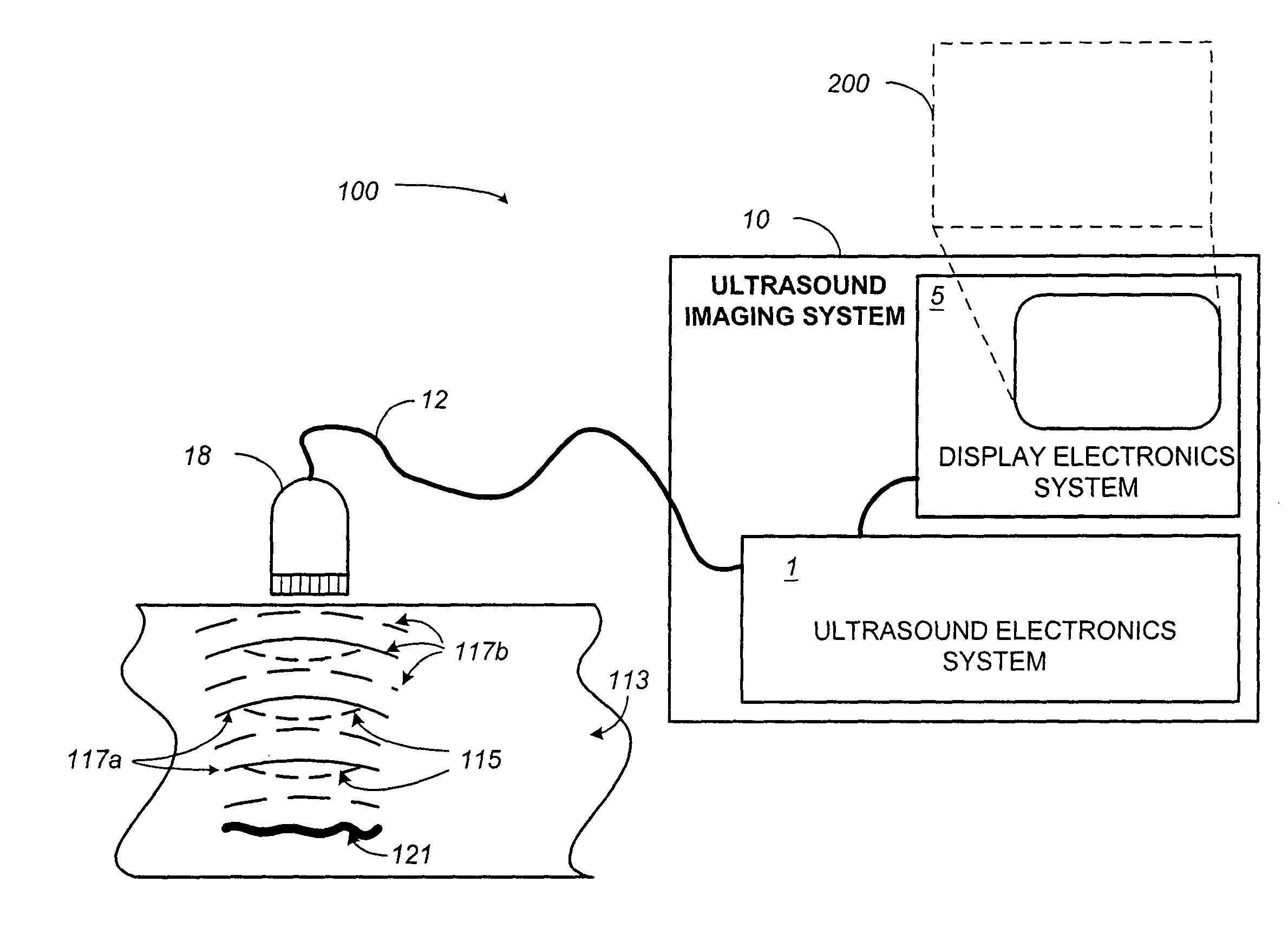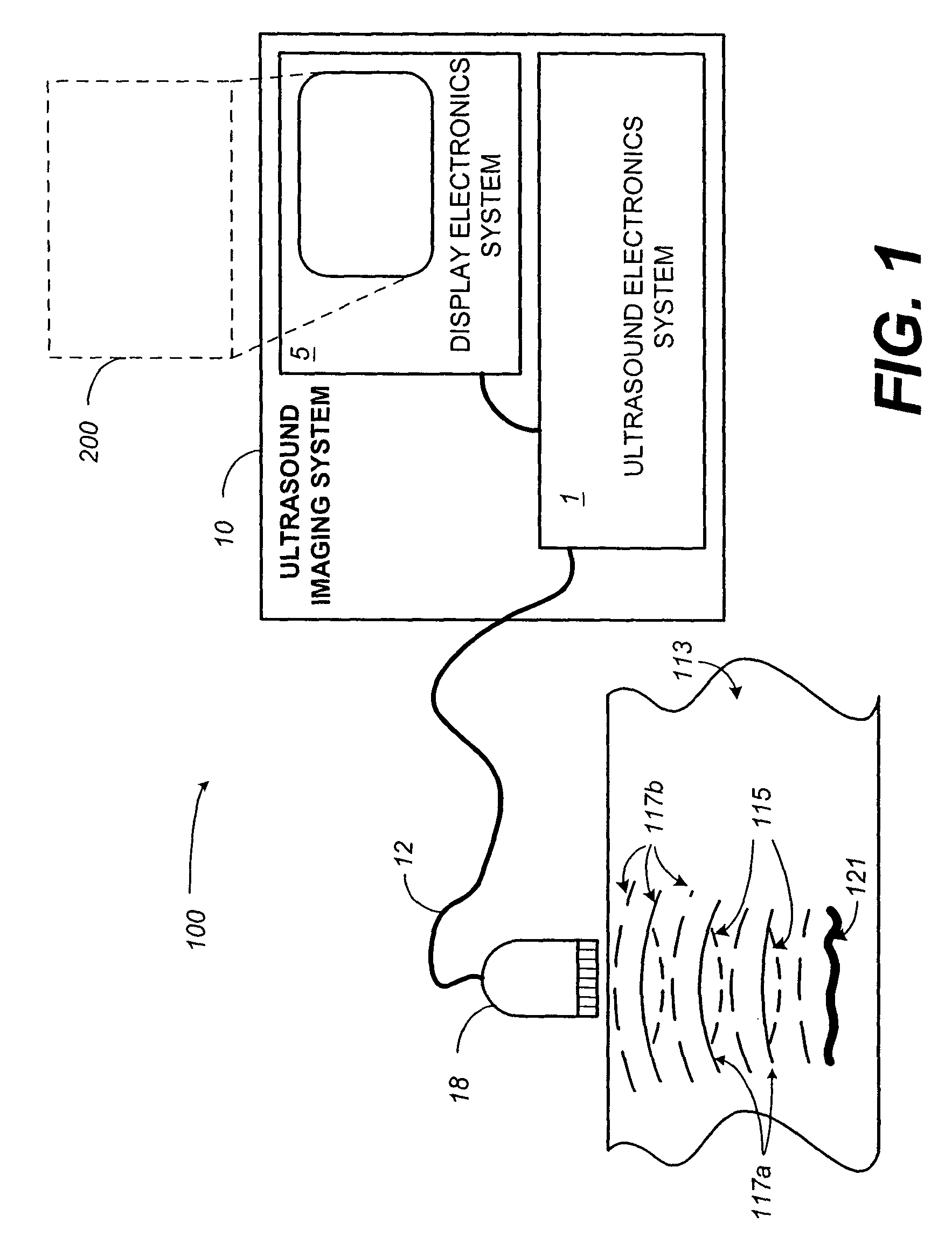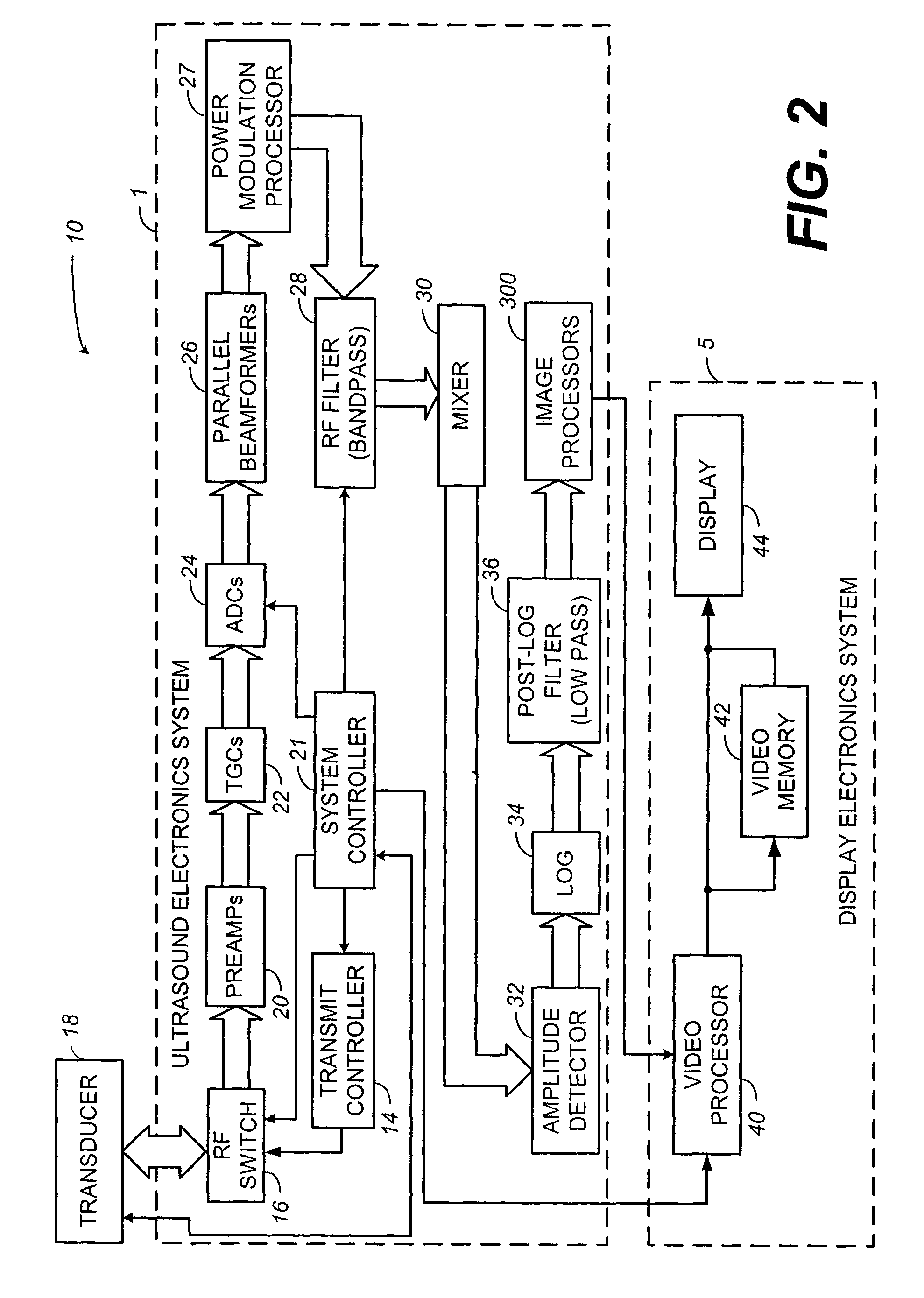Contrast-agent enhanced color-flow imaging
- Summary
- Abstract
- Description
- Claims
- Application Information
AI Technical Summary
Benefits of technology
Problems solved by technology
Method used
Image
Examples
Embodiment Construction
[0028]The present disclosure generally relates to contrast imaging. According to one aspect of the invention, a contrast-agent detection technique is used together with a tissue-signal suppression technique to image contrast-agent concentrations within blood vessels of contrast-agent perfused tissue. In another aspect of the invention, a tissue-motion velocity signal is isolated and used to correct blood-flow velocity information relative to the tissue rather than relative to the transducer. In either case, a color-flow processor is used together with a clutter filter to generate a signal representing contrast-agent velocities. The combination of the tissue-suppression feature of power modulation with flow-estimation feature of color-flow processing makes it possible to differentiate relatively slow-moving blood from moving tissue. Some exemplar clinical applications may include coronary-artery imaging, coronary-flow reserve assessment, blood-perfusion imaging, and tumor detection b...
PUM
 Login to View More
Login to View More Abstract
Description
Claims
Application Information
 Login to View More
Login to View More - R&D
- Intellectual Property
- Life Sciences
- Materials
- Tech Scout
- Unparalleled Data Quality
- Higher Quality Content
- 60% Fewer Hallucinations
Browse by: Latest US Patents, China's latest patents, Technical Efficacy Thesaurus, Application Domain, Technology Topic, Popular Technical Reports.
© 2025 PatSnap. All rights reserved.Legal|Privacy policy|Modern Slavery Act Transparency Statement|Sitemap|About US| Contact US: help@patsnap.com



